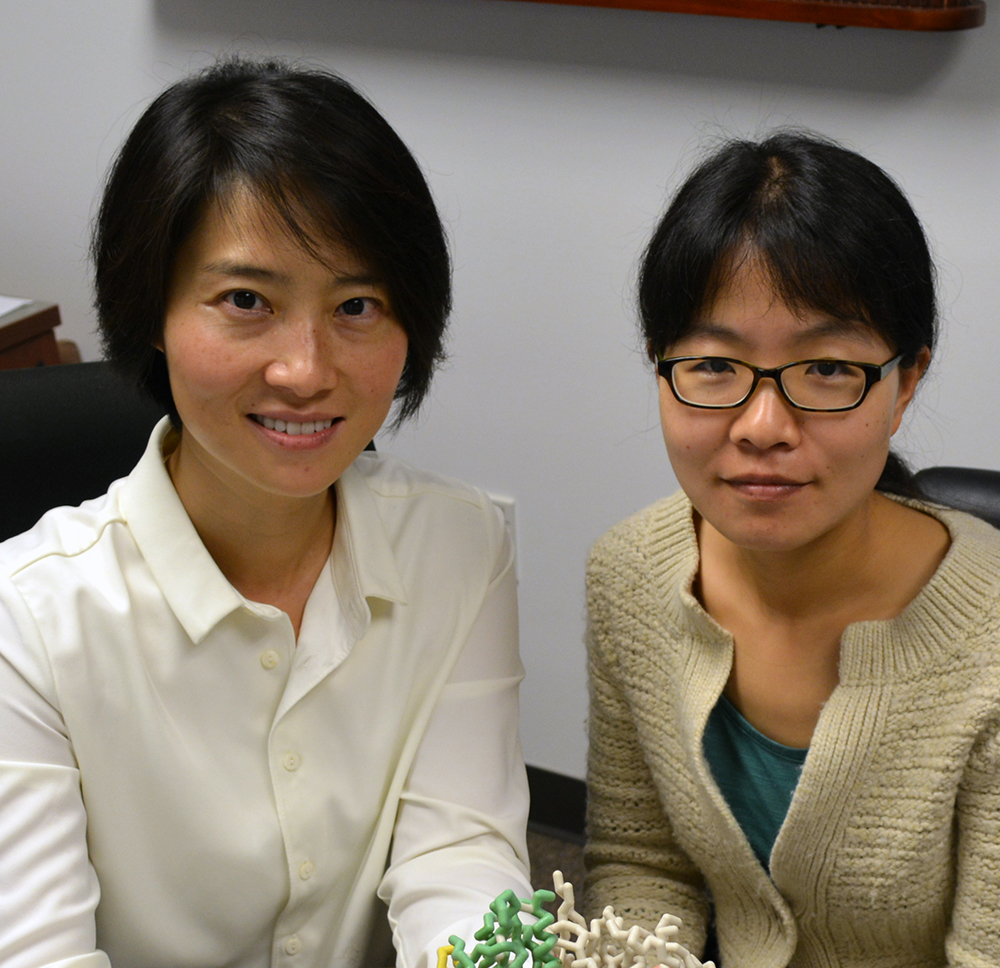
TSRI Scientists Find New Cancer Drug Target in Dual-Function Protein
Scientists at The Scripps Research Institute (TSRI) have identified a protein that launches cancer growth and appears to contribute to higher mortality in breast cancer patients.
LA JOLLA, CA – June 27, 2016 – Scientists at The Scripps Research Institute (TSRI) have identified a protein that launches cancer growth and appears to contribute to higher mortality in breast cancer patients.
The new findings, published June 27, 2016 in the journal Nature Structural & Molecular Biology, suggest that future therapies might target this protein, called GlyRS, to halt cancer growth.
“We have potentially found an important target for anti-cancer treatment,” said TSRI Professor Xiang-Lei Yang, who led the study.
Catching a Double Agent
Since the early days of life on Earth, GlyRS has played a role in protein synthesis, helping cells function and grow.
The new study, a collaboration with Professor Patrick Griffin’s lab on the Florida campus of TSRI, reveals that GlyRS is actually a double agent—in addition to its biologically essential role in making proteins, it can help to further modify proteins in a way that launches cancer growth.
The researchers found that overexpression of GlyRS may lead to too little p27—a protein than Yang compared to a stop sign for cell growth.
Specifically, the team found that GlyRS creates a protective shield around a modifier protein, called NEDD8, and safely “chaperones” it to meet its target protein, called cullin. With NEDD8 in place, cullin is activated to degrade p27.
Kept at the right levels, p27 regulates the cell cycle, stopping potential cancer growth. But when GlyRS levels increase, too much p27 gets degraded and cells multiply unchecked.
“Cancer cells hijack and over-exaggerate the system,” said TSRI Research Associate Zhongying Mo, first author of the study. “This can lead to tumorigenesis.”
This process is especially dangerous given GlyRS’s additional function in protein synthesis, which supplies cancers with the proteins they need to keep growing. “Ultimately, both functions are linked to cell proliferation and tumorigenesis,” Yang said.
Indeed, when Mo analyzed data from a breast cancer tissue database, she found that patients with increased GlyRS had higher mortality.
Although this research is at the basic stage, the team believes it could guide future cancer diagnostics and therapies. For example, measuring GlyRS may provide a marker to help doctors predict how quickly a patient’s cancer might progress.
The team now plans to study the effects of GlyRS in different types of cancer and the possibility of developing a drug to inhibit GlyRS.
In addition to Yang, Griffin and Mo, authors of the study “Neddylation requires glycyl-tRNA synthetase to protect activated E2,” were Qian Zhang, Ze Liu, Yi Shi and Litao Sun of TSRI’s California campus and Janelle Lauer of TSRI’s Florida campus.
This research was supported by the National Institutes of Health (grant R01GM088278).
For more information, contact press@scripps.edu See More News

